Why Euphoria Puts You In Your Feelings: Behind The Vibe Of Teenage Wasteland
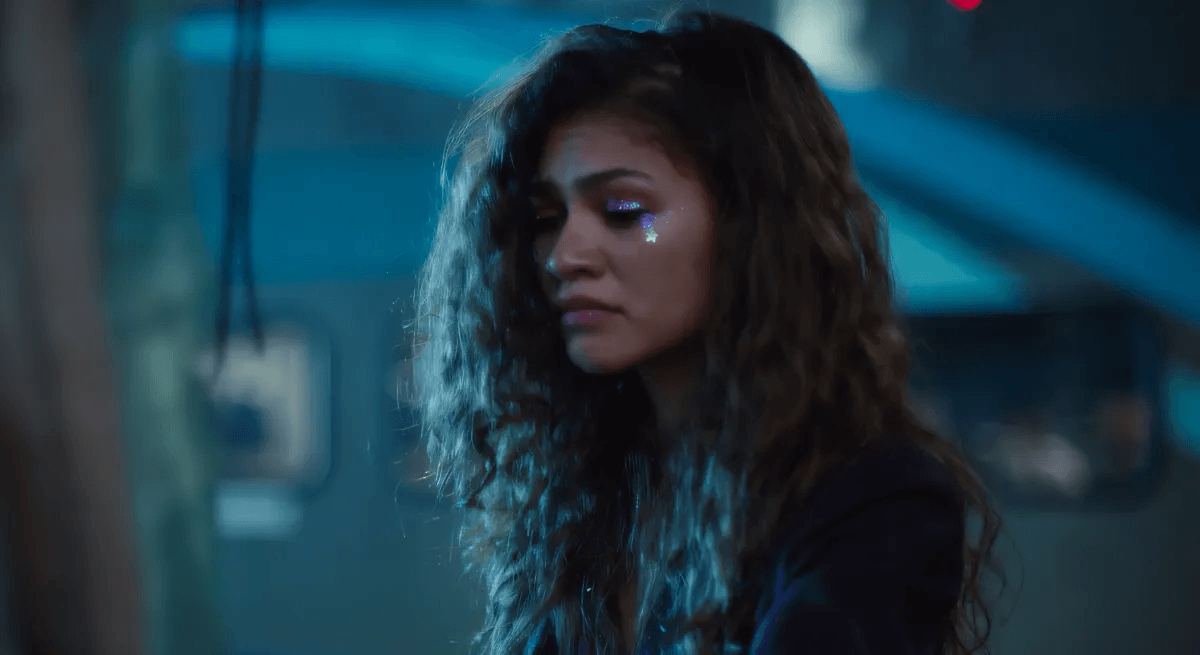
HBO's Euphoria starring Zendaya has quickly become one of the most popular shows on the planet. Teens and adults alike can relate to the complicated depiction of adolescence in the twenty-first century. But what is it about Euphoria that gets us all in our feels?
Euphoria stars Zendaya as Rue Bennett, a young girl who is struggling with drug addiction while attending high school. The primary theme is teenage angst as we are introduced to many characters, each with their own episode.
While Euphoria is certainly a pop-culture hit, it actually features some pretty alternative takes on the traditional TV drama. The show is heavy on coordinating more of a feeling than anything else by putting together a captivating network of calmly colored scenes and sonic tones. It induces in the viewer a sense of melancholy or empathy that connects them to the characters themselves.
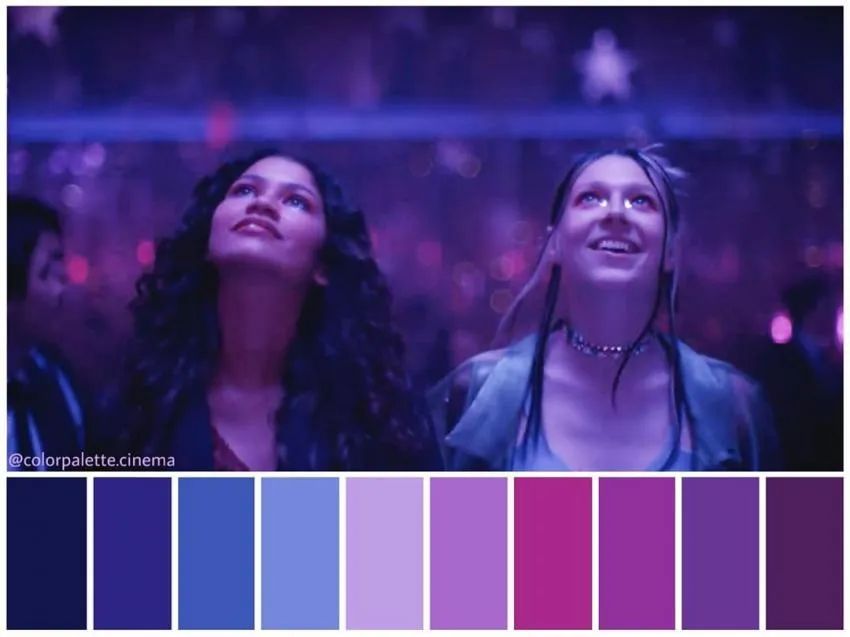
Using the Cold Color Palette to Paint Euphoria's Dramatic Sequences
Euphoria is one of the unique shows that has the distinction of having its own individual aesthetic. There has never been a vibe quite like the one Euphoria exudes. It places a focus on dramatic storytelling, vulnerable characters, and lighting and coloring that heightens those elements. The wardrobe for the characters is eclectic and free-spirited, and Rue's friend Jules is one of the biggest proponents of this idea.
Jules is a trans woman who is played by Hunter Schafer. Her character marches to her own beat and is proud of it. To reflect this, she is often dressed in eclectic outfits and flashy getups. This displays Jules' confidence as well as her belief in individuality. Common colors used are pastels, blues, pinks, and purples. These cool colors often appear in drug-induced sequences accompanied by music.
Although these colors do enhance the overall vibe of the show, they also bring a particular type of feeling to the set. The blueish hues remind us of sorrow and hardship. At the same time, there is a certain beauty to so many of the scenes of Euphoria.
On one hand, you have what can be an extremely exciting and endearing show. The party sequences show the reckless nature of the teens, but overall, the audience comes to feel for them in their time of youth and naivety. On the other hand, you have some extremely dark subject matter in the stories that can frighten the viewer with the anxiety of their own past.
In this case, the colors come off as calming and surreal. It is hard to place yourself in the vivid, dramatic world of Euphoria, but if you could, you would find the cooly-colored world fantastical. The show can incite some of the most stirring emotions from a viewer, and it does this all as a well-thought-out aesthetic patchwork.
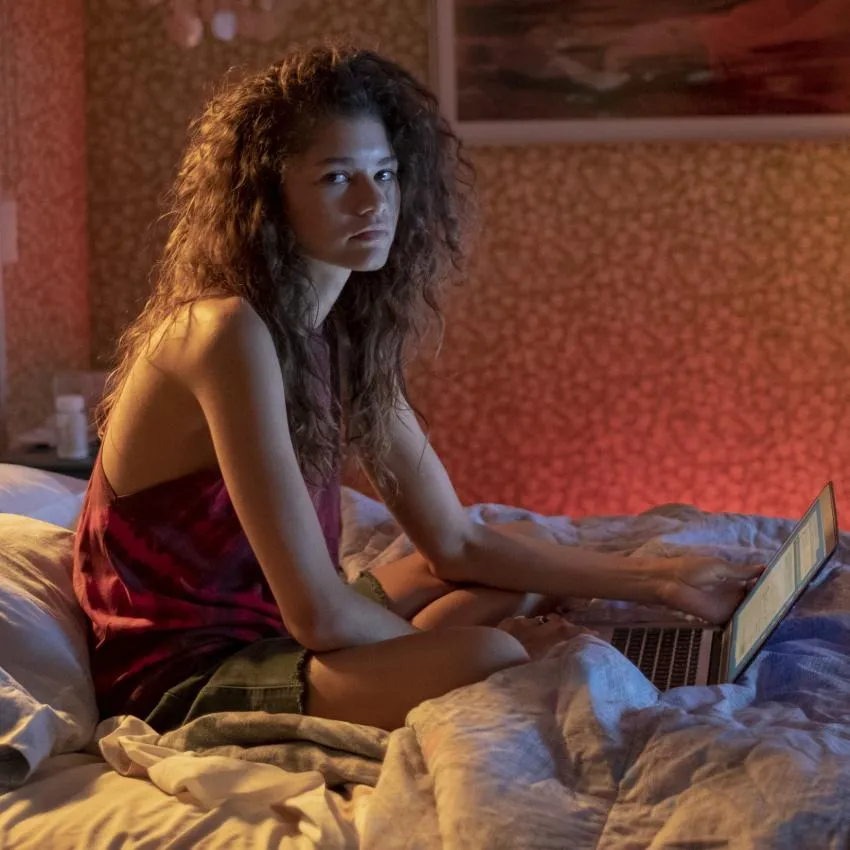
Zendaya as Rue Bennett
A large part of the overall vibe of teenage angst showcased in Euphoria is the riveting performance of Zendaya in the lead role. The desperation and compulsive nature of Rue’s drug addiction bring on a feeling of hopelessness that is complemented by the show’s music and color palette.
Although there are bright moments in Rue’s young life, especially in her relationship with Jules, it is easy to see the problematic nature of her choices. When she chooses to indulge herself and self-medicate with drugs, we are able to see that the total loss of control in her teenage life has given way to absolutely destructive behavior.
Indeed, Zendaya’s performance in certain scenes displays this angst-ridden nature quite well. When her drug dealer and friend Fezco, refuses to sell her any more drugs, she pounds on the door and cries and screams at him. You can really feel her anger and sadness at having no say in her addiction.
Rue wants so badly to be happy and conduct herself as anyone else would, but because of her addiction, she fails miserably. In the episode, “The Trials and Tribulations of Trying to Pee While Depressed”, we see that Rue cares little for her own safety and health.
In addition to the depression associated with her drug addiction, there is pervasive boredom that gives way to increasingly damaging behavior. In this episode, she refuses to get up from viewing reality television in her bed.
This leads to her getting an infection in her bladder, which causes her to be hospitalized. Zendaya depicts the self-loathing of Rue with such realism that it can be hard to watch her suffer on screen. All of this adds to the somber vibe of the teenaged Rue.
The audience follows Rue and ultimately feels deep sympathy for her. In her struggles with addiction and depression, many people can see themselves and this can help add an additional layer of sorrow to the overall feeling of the show.
As a result of her outstanding work as Rue Bennett, Zendaya received an Emmy Award. This was her first Emmy and a well-deserved one at that. Her desperate and vulnerable portrayal of Rue is the centerpiece of the dark vibe of Euphoria which showcases the hard reality of what it is like to be an adolescent in our modern America.
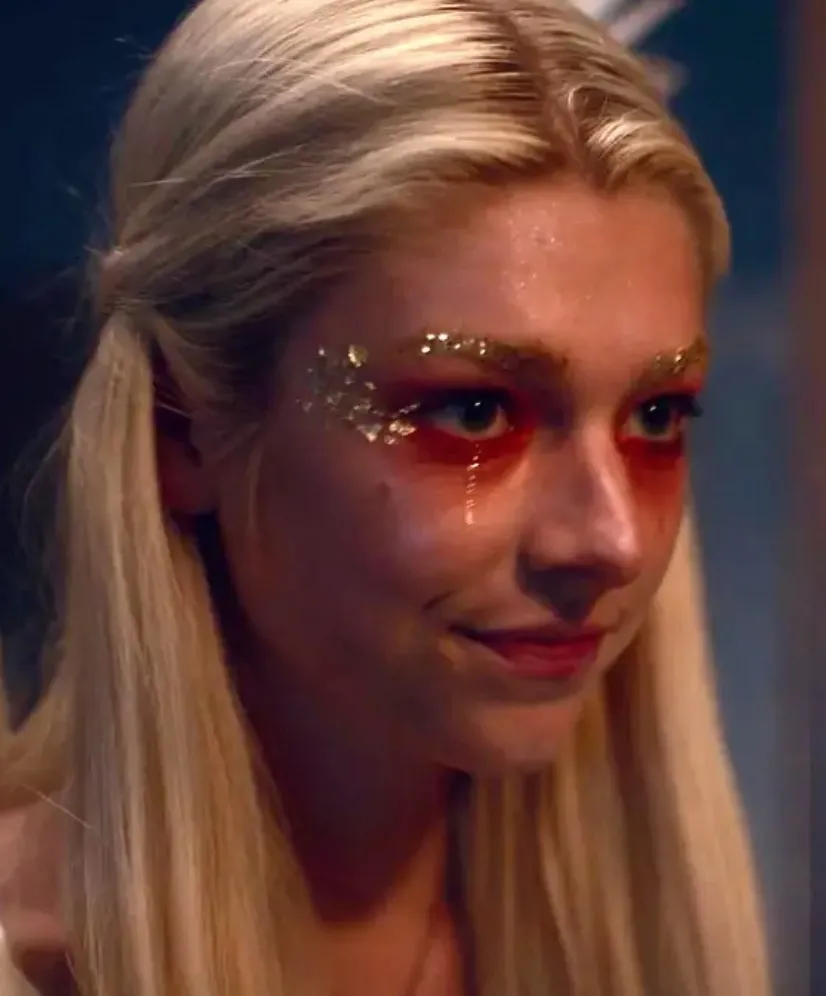
Hunter Schaefer as Jules
Hunter Schaefer’s stirring performance as Jules has earned her a large cult following. Schaefer, a trans woman, and model who has worked with many big names including Versace and Maison Margiela is also an activist who devotes her time to LGTBQ pride and awareness.
Regarding her high-profile role on the show, Schaefer had this to say: “I think, perhaps, there’s a bit of a projection of Jules onto me, Hunter.” That is to say, Hunter and Jules are both trans women trying to find themselves in the world.
As for Schaefer, her search for her identity has been a much more public affair. She has largely been given the spokesperson position for LGBTQ folks everywhere, whether she desired it or not. Still, her very popular and moving portrayal, the first major trans role that has become mainstream, has earned her high praise.
While Rue’s addiction is a struggle that is itself a commentary on the universal struggle of adolescence, Jules’ quest for meaning and recognition is particularly brutal. In her special episode this past January, Jules sat with a therapist to discuss how her identity is completely unique and new.
As she grows as an actor and performer, Hunter Schaefer will certainly show us more of what she holds inside of herself, and that is truly something to look forward to.
The large ensemble cast of the show all struggle with some particular problem and as adolescents, they are all trying to find themselves. With Jules, we are given a unique perspective that is not especially normal to many people. This adds a valuable layer to the teenage struggle of Euphoria.
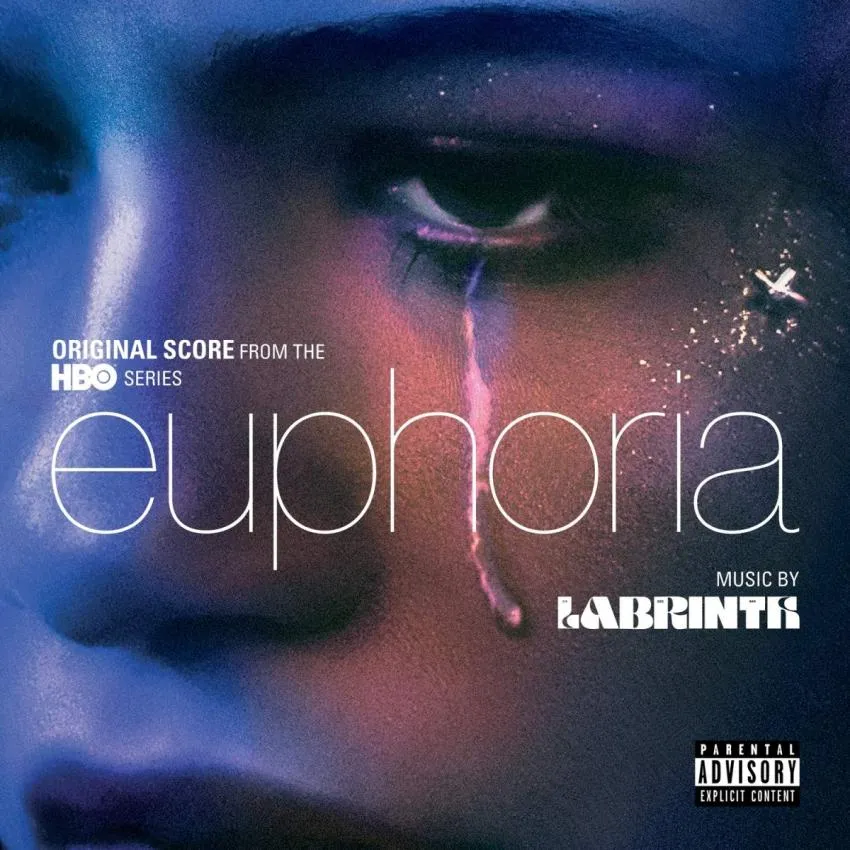
Labrinth and the Soundtrack of Euphoria
Music is an extremely vital part of the Euphoria experience. The pilot episode features an epic party sequence with music from Young Thug and Migos, which are contemporary and relatable. But the original music on the show is really what sets the scene for the emotional rollercoaster of teenage life.
When British producer and singer Labrinth was contacted to do the music for the show, he had no idea the commercial juggernaut it would become. He focused himself on capturing the special angst of youth and came out on top with some really moving music.
“When you look back to your teenage days,” Labrinth says, “it feels semi-magical but semi-crazy and semi-psychotic. I wanted to make sure the music felt like those things.” When Rue is riding around on her bike we are treated to the eclectic and hazy “Still Don’t Know My Name”. This song has captured the hearts of viewers as the sonic personification of Rue’s struggle for love and acceptance.
Still, other tracks, especially “Formula”, which plays off the title of the show, speaks about drug addiction and the highs and lows of being a hormonal teenager. When coupled with the dreary color choices and emotionally charged performances of the cast, the music helps form the aesthetic theme of the show.
This feeling, what you might term the opposite of euphoria is what the show is all about. It speaks about the ups and downs of that pivotal place in life, where you are not only trying to find yourself but also your purpose in life.
Opinions and Perspectives
The way they handle Jules story is so refreshing. Finally some good trans representation
Every episode feels like an emotional rollercoaster but I cant stop watching
The special episodes with Jules and Rue were some of the most powerful TV Ive ever watched
The way they portray addiction is so raw and honest. No glamorization, just reality
Its amazing how they balance the beautiful aesthetics with such heavy subject matter
The party scenes are intense but they capture that chaotic energy of high school perfectly
Hunter Schafer brings such authenticity to Jules. You can tell shes drawing from real experiences
Anyone else feel like the show helps them process their own teenage experiences?
The lighting choices really add to the dreamlike quality. Makes you feel like youre in their world
I love how they don't try to simplify any of the characters. Everyone is complex and flawed
My heart breaks every time I watch the episode where Rue can't get out of bed. That depression representation is so accurate
Still Don't Know My Name by Labrinth perfectly captures that feeling of being lost in your teenage years
Never thought Id be so moved by a teen drama but here we are. This show hits different
The way they use those pastel colors in the heavy scenes creates such an interesting contrast
I find myself relating to different characters at different times. That's what makes the writing so powerful
The costume design deserves more recognition. Each character's style tells so much about who they are
Watching Rue's struggles with addiction makes me realize how many people around us might be fighting similar battles
That's a fair point about glamorization, but I think they balance the beautiful visuals with showing real consequences
The aesthetic is amazing but I worry it might glamorize some really serious issues
Sometimes I have to pause the show because it gets too intense. The way they blend the visuals with the music just hits too close to home
Can we talk about how groundbreaking Jules' character is? Having a trans character who isn't just defined by being trans is so important
The scene where Rue is banging on Fezco's door literally brought me to tears. You can feel every bit of her desperation
I actually disagree about it being too dark. As someone who went through similar struggles in high school, I think it captures that intensity perfectly
Honestly what makes this show special to me is Zendaya's performance. The way she portrays Rue's addiction is so heartbreaking and real
Am I the only one who thinks sometimes the show goes too far with the dark themes? I understand wanting to be realistic but it feels overwhelming at times
The music hits different in Euphoria. Labrinth's soundtrack perfectly captures that mix of magical and psychotic feeling of being a teenager
I really appreciate how the show captures the raw emotions of teenage life. The way they use those cool color palettes really adds to the heavy feeling of everything
